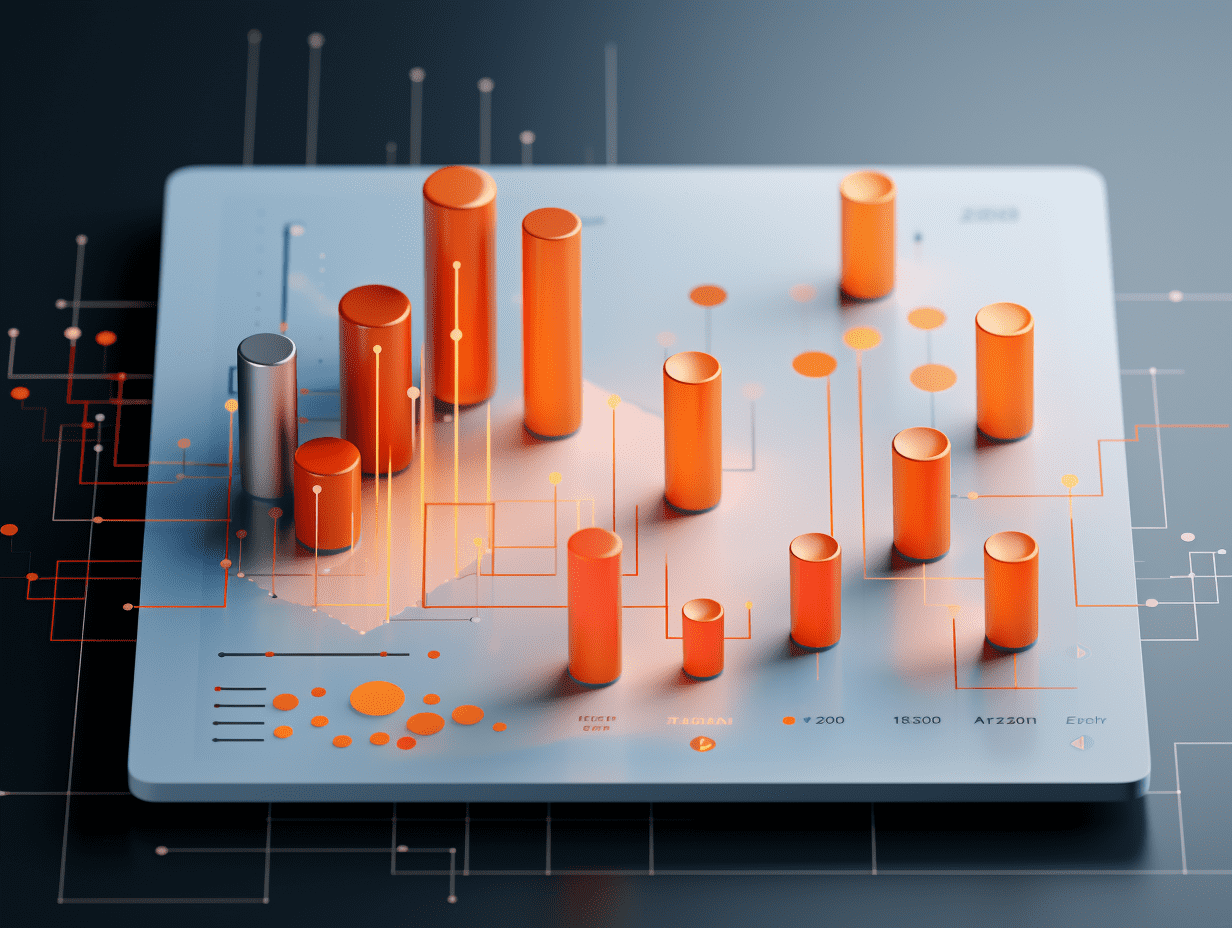IDC: The total global investment in artificial intelligence IT is expected to reach $315.8 billion in 2024, and is projected to increase to $815.9 billion by 2028.
Focus on generative AI (Generative AI), IDC predicts that the global generative AI market will have a five-year compound annual growth rate of 63.8%, and by 2028, the global generative AI market size will reach $284.2 billion, accounting for 35% of the total investment in the AI market.
Recently, the International Data Corporation (IDC) released the 2025 version 1 IDC Worldwide AI and Generative AI Spending Guide. According to IDC data, global artificial intelligence (AI) IT total investment is projected to reach $315.8 billion in 2024 and is expected to increase to $815.9 billion by 2028, with a compound annual growth rate (CAGR) of 32.9% over five years. Focusing on Generative AI, IDC predicts that the global Generative AI market will have a compound annual growth rate of 63.8%, reaching $284.2 billion by 2028, accounting for 35% of the total AI market investment.
Insights into the Chinese Market
In terms of AI spending in China, IDC data shows that China will continue to lead the development of the AI market in the Asia-Pacific region, accounting for over half of the total AI spending in the region. It is expected that by 2028, the total AI investment in China will exceed $100 billion, with a five-year compound annual growth rate of 35.2%. In the government work report of 2025, "AI+" was specifically mentioned as a policy section for the first time, emphasizing the continuous promotion of the "AI+" action and the integration of digital advantages with manufacturing industry foundations and market scale to promote the application of large-scale model technology in more fields. Additionally, the report specifically identifies intelligent connected new energy vehicles, AI terminal devices (such as smartphones, Siasun Robot & Automation, etc.) as key development directions, strengthens the construction of national computing power infrastructure, and creates competitive digital industry clusters through optimized resource allocation. It is evident that the strategic position of AI in economic development is further highlighted, and AI will deeply penetrate all sectors of the national economy in the future.
Insights into the Chinese Generative AI Market
IDC data shows that in 2024, China's Generative AI accounted for 18.9% of the total AI market investment. With the rapid development of Generative AI technology, by 2028, the proportion of investment in Generative AI will reach 30.6%, with an investment scale exceeding $30 billion and a five-year compound annual growth rate of 51.5%. IDC believes that Generative AI demonstrates strong application value in multiple fields and accelerates automation processes across industries, from general scenarios to specific industries, with significant impacts. Employees in enterprises can use Generative AI to quickly summarize reports, write job descriptions, optimize tasks, greatly improve office efficiency, and assist in decision-making. Developers can enrich the development process with Generative AI, generate test cases, shorten development cycles, and improve software quality. In industries such as industry, marketing, and healthcare, Generative AI can complete industrial design sketches, ad copywriting, medical image analysis in seconds, generating more innovative solutions and creating economic benefits.
Insights into the AI Industry
Industry users are actively exploring and creating scenarios for Generative AI applications, developing digital products and services, exploiting the value of data elements, and exploring intelligent business models. According to IDC data, the three industries with the highest AI investment are software and information services, telecommunications, and banking, accounting for 49.8%, 7.4%, and 5.8% respectively in 2028. AI helps the software and information services industry optimize business processes through automation development and personalized services, improve industry competitiveness, and train models with rich data to foster new products and services. In the telecommunications industry, Generative AI can optimize network planning and management to improve customer service quality. Financial institutions can use Generative AI for risk assessment and provide personalized wealth management advice to customers.
Insights into AI Application Scenarios
The 2025 government work report proposes combining digital technology with manufacturing and market advantages, emphasizing that the development of AI should not only focus on technological research and development, but also on application scenarios to achieve industrialization.
IDC data shows that in AI application scenarios, AI infrastructure provisioning is the largest application scenario in the Chinese AI market, accounting for approximately 40% of the AI market. It includes investments by infrastructure service providers in creating and managing IT infrastructure for AI systems, granting users access to this infrastructure, providing the resources needed for AI system development, or providing AI services to end customers. The second largest application scenario in terms of market size is AI-enabled customer service and self-service. This scenario uses a dynamic knowledge base to generate knowledge articles efficiently resolve customer queries, provide multi-language interactions, accurately identify knowledge gaps, and offer personalized recommendations. It can also handle customer issues in real time, assisting customers with self-service. Augmented contact center and field service is the third leading application scenario. This scenario utilizes digital channels and intelligent IVR to assist customers in problem-solving and task completion, optimize customer service scheduling, and provide task information and support for field service technicians, building a knowledge base to enhance service delivery.
IDC China Enterprise Analyst Zhang Wenhui stated that technological revolution is driving AI towards intelligent ecosystems. The new generation of infrastructure with self-optimizing AI features is changing traditional computing architectures, improving energy efficiency, and giving rise to new technologies. Faced with the exponential growth in complexity of Generative AI models, enterprises are increasingly demanding that Generative AI improve production efficiency and bring economic benefits.Investments in storage and computing capabilities have greatly promoted the implementation of artificial intelligence in more scenarios. The explosive growth of generative AI has also brought new challenges. On the one hand, as models become more complex, data privacy is more easily compromised; on the other hand, the high level of integration of intelligent systems makes them more vulnerable to cyber attacks. Therefore, while companies are working on developing new technologies, they also need to build a comprehensive security system, perform data governance, and implement security measures to achieve sustainable development.IDC China's senior research manager Guo Yue believes that the development of China's artificial intelligence market is rapid, making it an important force in the global AI field. By 2024, the market size is expected to reach nearly 300 billion RMB, with an annual growth rate exceeding 70%. Core applications are concentrated in areas such as computer vision, speech recognition, and natural language processing. Strong policy support, a rich corporate ecosystem, and the push from technology giants and unicorn companies are driving the landing of AI in industries such as finance, retail, healthcare, and autonomous driving. However, there is still a need to continuously explore the development paths of high-end chips and the originality of foundational algorithms. Future trends focus on large model competitions, edge AI, and AI+ science, while also deepening the upgrade of traditional industries and commercializing AIGC. Long-term development requires breakthroughs in basic technology to strive for discourse power in AGI and international standards.
Related Articles

On January 8, TRADEGO (08017) spent HK$3.3026 million to repurchase 2 million shares.

Henan Yuguang Gold & Lead (600531.SH): Jiyuan Investment Group plans to reduce its shareholding by no more than 1.71%

CG Services (06098) spent 2.484 million Hong Kong dollars to repurchase 400,000 shares on January 8th.
On January 8, TRADEGO (08017) spent HK$3.3026 million to repurchase 2 million shares.

Henan Yuguang Gold & Lead (600531.SH): Jiyuan Investment Group plans to reduce its shareholding by no more than 1.71%

CG Services (06098) spent 2.484 million Hong Kong dollars to repurchase 400,000 shares on January 8th.

RECOMMEND

Bank Of America Sees Three Drivers Supporting Chinese Consumer Stocks: Low Base, Deep Undervaluation, And Convertible‑Like Defensive Traits
07/01/2026

Cross‑Border E‑Commerce In 2025: Tariffs, Trade Wars, And Shifting Away From The United States
07/01/2026

Asian Stock Markets Record The Strongest Annual Start Ever As Shanghai Composite Hits Multi‑Year High And Sets Longest Winning Streak; Japan And Korea Rally
07/01/2026


